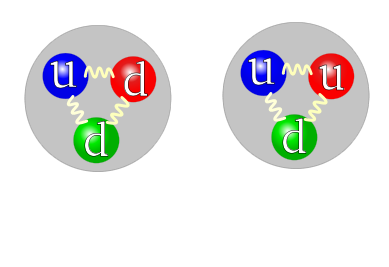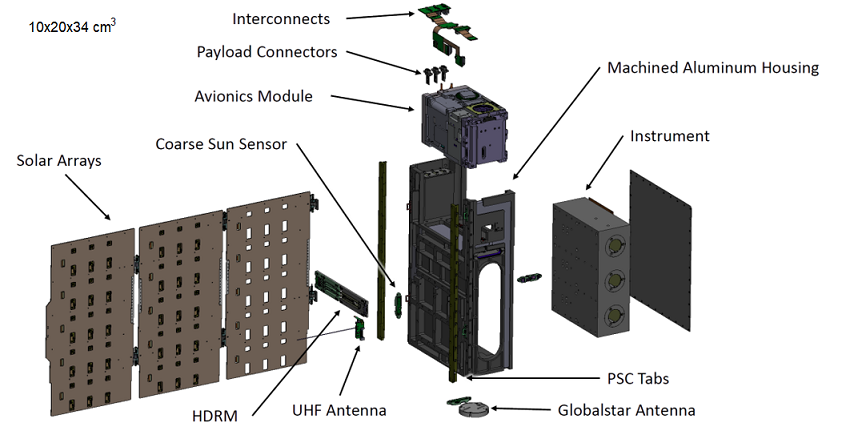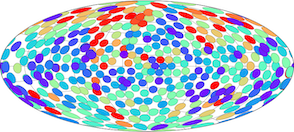About HaloSat
What is a BaryonBaryonic matter consists of atoms that absorb and emit electromagnetic radiation. A baryon is a subatomic particle made up of three quarks, for example a proton or neutron. Nearly everything you encounter every day is made up of baryons. A common misconception is that the missing baryon problem has to do with dark matter which is incorrect. Baryons interact with light while dark matter does not. 
The Missing Baryon ProblemBecause light travels with finite speed, looking further in space means looking further back in time. Peering back as far as we can to the early days of the universe, we see when it was around 400,000 years old in what is known as the Cosmic Microwave Background (CMB). Analysis of the CMB shows that the universe was uniformly filled with hot gas around 3000 Kelvin. A census of baryons in the universe today only finds about 3% of the total mass/energy of the universe, half of what is expected. 
How Do You Look for Missing BaryonsTemperature determines what type of electromagnetic radiation baryons emit:  3 to 3,000 K - radio, infrared; 3,000 to 10,000 K - visible; 10,000 to 200,000 K - ultraviolet Because we can see the things below 200,000 K, the missing baryons are likely to be hot so we need to look at X-rays. Evidence for an extended Galactic halo has been obtained from high-resolution absorption line spectra, but these measurements are possible only along a limited number of lines of sight. Emission lines can be measured in any direction. HaloSat will conduct a near all-sky survey of oxygen line emission to constrain the mass and spatial distribution of hot gas associated with the Milky Way. Constraints on the hot Galactic halo will help address the cosmological missing baryon problem (Wang & Yao 2007; Nicastro et al. 2012; Gupta et al. 2012; Henley & Shelton 2014).
X-RAY DETECTORS
Three redundant x-ray collimator units. X-ray detectors from Amptek, Inc., with active area of 25 mm2 behind a silicon-nitride window. Silicon Drift Detector is inside sealed can and cooled by a thermoelectric cooler (TEC). 6U CUBESAT - COMMERCIAL CUBESAT BY BLUE CANYON TECHNOLOGIES
OBSERVING PROGRAM
In orbit, HaloSat will utilize solar panels and alignment techniques provided by Blue Canyon Technologies’ XB1 CubeSat bus housing and avionics module. HaloSat will go into low Earth orbit, circumnavigating the Earth once every 90 minutes. To minimize heliospheric and magnetospheric background, all observations will be taken on the night side of the orbit. HaloSat will observe 75% of the night sky in 6 months, and ~100% in 12 months.
Latest NewsMay 23, 2023The catalog with the fitting results of the HaloSat Circumgalactic Medium (CGM) fields is now available in the archive.
May 1, 2023All Halosat data collected during the science operations from Oct 15, 2018 and Sep 29, 2020 were reprocessed (version hsuf_20221026) and are now available from the HEASARC archive. More details are available in the reprocessing page
Dec 14 2022Release of a report on the Halosat background and an update of the data analysis guide
Feb 14, 2022Release of a report on the in-flight calibration and an update of the data analysis guide
Feb 12, 2021The complete HaloSat data archive is now available from the HEASARC. This release includes all data collected during the science operations from Oct 15, 2018 and Sep 29, 2020. The observations include 415 fields covering all the sky.
Jan 4, 2021.HaloSat reentered Earth's atmosphere on January 4, 2021 marking the end of the satellites nearly two and a half year orbit. More on HaloSat
Apr 15, 2020.HaloSat archive opens
|



